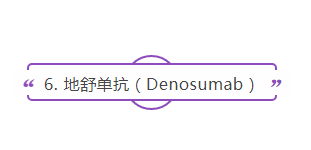Nephenavir, an HIV-1 protease inhibitor, was developed by Agouron Pharma and marketed in the United States in 1997 to treat HIV-1 infection in combination with other antiviral drugs. Adults take tablets about 2.3-2.5g daily. Common side effects include insulin resistance, hyperglycemia and dyslipidemia.
Since 2009, studies on the use of nefenavir in cancer prevention have been ongoing. More than 15 clinical trials have been completed or ongoing in the United States (either alone or in combination with chemotherapy/radiotherapy). The anti-cancer mechanism of nefenavir is to inhibit Akt/PKB signaling pathway, and trigger endoplasmic reticulum stress and subsequent unfolded protein response (UPR).
It was found that nefenavir significantly inhibited xenograft regeneration in pancreatic astrocyte (PSC) tumors, which can be attributed to vascular normalization.
Phase II clinical NCT01959672 (2013-2018) for patients with advanced pancreatic cancer (n=11) received SBRT/nephenavir mesylate after combined chemotherapy. Results As GEM/LV/FU therapy was replaced by FOLFIRINOX & GEM/abraxane, the study was completed ahead of schedule.
Another phase II clinical treatment for Kaposi's sarcoma (NCT03077451) is being recruited.

Saracatinib, developed by AstraZeneca, is a Src/Abl bikinase inhibitor (IC50 is 2.7nM, 30nM, respectively). Because of the substitution of aniline at the 4-position of quinazoline, it also has the activity of EGFR tyrosine kinase inhibitor, but its activity is not high. AZD0530 has strong ability to penetrate blood-brain barrier.
Phase II trials (NCT00397878) were initiated in patients with colorectal cancer in 2007. A total of 10 patients were recruited and oral Saracatinib 175 mg qd. All patients developed disease progression during the two treatment cycles, and Saracatinib alone showed poor activity. AstraZeneca suspended development of the drug in 2010.
Saracatinib can antagonize Fyn, a family of Src kinases, thus promoting the re-establishment of synaptic connections in the brain cells affected by A beta in mice. A randomized, double-blind phase IIa clinical trial for AD (NCT02167256, n = 159, 100mg or 120mg qd.) funded by NCATS began in 2014 and was completed in early 2018. Clinical data were released in Spain in October. There was no significant difference (p=0.337) in the decrease of glucose metabolic rate (main endpoint) in the brain tissue of the treatment group at 52 weeks.
Phase I trials for Parkinson's disease (NCT03661125, n = 30) are expected to be launched in the UK in December 2018 to assess effectiveness.
Src kinase is a part of NMDA receptor complex and plays an important role in hyperalgesia. A double-blind phase II clinical trial (NCT02085603, n = 12) for cancer-induced bone pain was initiated in 2014 and completed in early 2018. At present, only animal experimental data are published.

Zibotentan (ZD4054) is an oral specific endothelin A receptor antagonist (IC50 = 21nM), developed by AstraZeneca. By 2005, nearly 140 volunteers had completed six Phase I studies.
Zibotentan slows down the growth and spread of tumors by blocking endothelin A receptors. Three phase III clinical trials for hormone-refractory prostate cancer (HRPC) conducted in 2007-2011 failed because of their effectiveness.
Bosentan, a dual endothelin receptor antagonist, has been used to treat pulmonary hypertension caused by scleroderma. A Zibotentan phase II clinical trial for scleroderma and chronic kidney disease (NCT02047708) was launched in the UK in 2014 and completed in October 2017.

Desucumab is the first drug used to inhibit nuclear factor kB receptor activator (RANKL), which has a good effect on osteoporosis. Developed by Anjin Company, it was approved by FDA in June 2010 for postmenopausal osteoporosis in women. It is injected subcutaneously every 4 weeks (120 mg). At the same time, clinical trials showed that the reduction of bone-related events in malignant tumors was better than zoledronic acid. In November of the same year, FDA approved the use of zoledronic acid in the treatment of solid tumors with bone metastasis. It was approved for use in giant cell tumors of bone (GCT) in 2013.
It was found that desumab could reduce inflammatory cytokines and change the diversity of intestinal microflora in mice with colitis. RANKL is also activated in Crohn's disease, and a considerable proportion of Crohn's patients suffer from osteoporosis. In addition, the RANKL variant (rs2062305) has been proved to be associated with Crohn's disease through genome-wide association studies. In April 2018, a phase I/II clinical trial for Crohn's disease (NCT02321280) was completed.

Erteberel, developed by Lilai Company, is a synthetic selective estrogen receptor beta agonist-1 (the Ki value of ER beta is 0.19 nM, and the Ki value of ER alpha is 2.67 nM).
A phase II clinical trial for benign prostatic hyperplasia (NCT01097707) started in 2010, but ended in 2011 due to insufficient efficacy.
In June 2013, a phase II clinical trial (NCT01874756) was conducted to evaluate the safety and efficacy of Erteberel in patients with schizophrenia-related cognitive impairment. It was expected to be completed in June 2018.

PF-05190457, developed by Pfizer, is a competitive antagonist of Ghrelin receptor (GHSR1a) (human Kd = 3nM), which can enhance vagal afferent discharge, increase insulin secretion and inhibit growth hormone release. Phase I clinical trials of type 2 diabetes mellitus were conducted in 2010-2011. The tolerance of human body reached 100 mg bid for 14 days. After acute administration, dose-related heart rate increased (maximum to 10 beats/min), growth hormone secretion decreased and postprandial blood sugar decreased.
In March 2016, NIH funded phase II clinical trials for alcoholics (NCT027055). The study is currently under way.

